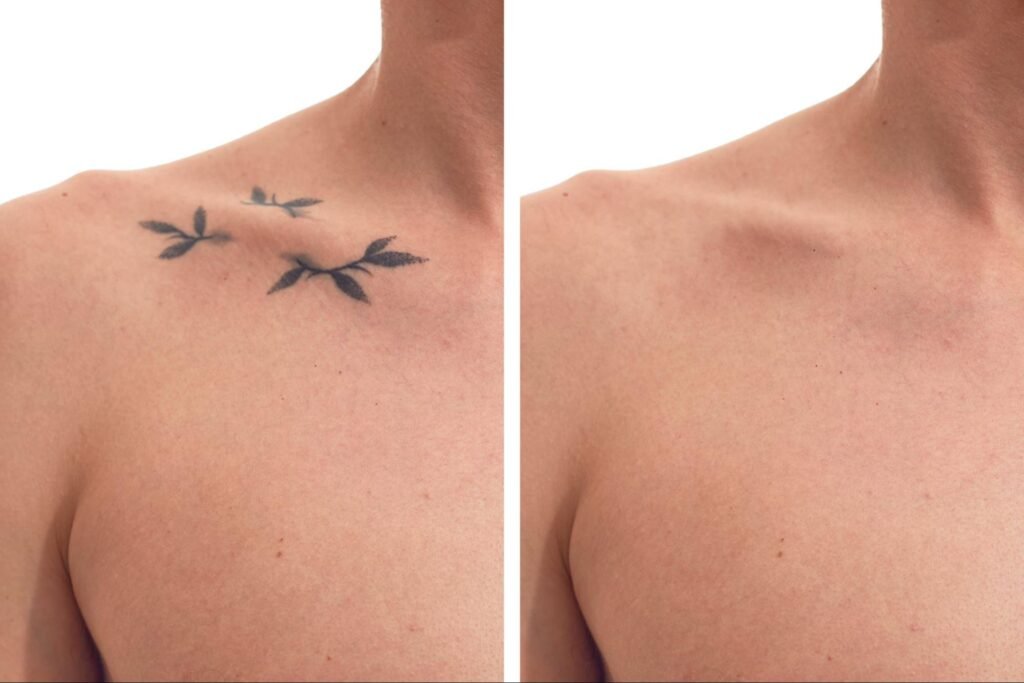Athena Skin Hair & Dental Clinic
Tattoo Removal

What is tattoo removal
Tattoos are a popular form of body art, but many people eventually decide to remove them for various reasons. Tattoo removal has advanced significantly, offering different methods for individuals seeking to erase unwanted ink.
Causes for Tattoo Removal
People remove tattoos for several personal, professional, or medical reasons, including:
Regret – Changing preferences or lifestyle choices may lead to the desire for removal.
Employment Requirements – Certain professions have strict policies regarding visible tattoos.
Poor Quality Tattoos – A tattoo may not turn out as expected, leading to dissatisfaction.
Medical Issues – Allergic reactions, infections, or scarring can necessitate removal.
Relationship Changes – Many people remove tattoos that reference past relationships.
Social or Cultural Reasons – Personal or religious beliefs may influence the decision.
Fading or Distortion – Over time, tattoos may blur or fade, reducing their aesthetic appeal.
Tattoo Removal Treatments
1. Laser Tattoo Removal
Process: Uses high-intensity light beams to break down ink particles in the skin.
Types: Q-switched lasers (Nd:YAG, Ruby, Alexandrite) are commonly used.
Sessions Required: Multiple sessions (6-10) depending on tattoo size and color.
Effectiveness: Works best on black and dark-colored tattoos; lighter colors may require additional treatments.
Side Effects: Temporary redness, swelling, blistering, or scabbing.
2. Surgical Excision
Process: The tattooed skin is surgically cut out, and the wound is stitched.
Best for: Small tattoos in easily accessible areas.
Effectiveness: Complete removal with minimal sessions but may leave a scar.
Side Effects: Scarring, infection risk, and longer healing time.
3. Dermabrasion
Process: A high-speed rotary device removes the top layers of skin containing ink.
Effectiveness: Less effective than laser removal; may not remove deep ink.
Side Effects: Pain, scarring, discoloration, and long recovery time.
4. Chemical Peels
Process: Acidic solutions, like trichloroacetic acid (TCA), remove the top layers of skin.
Effectiveness: Can fade tattoos but is not as effective for complete removal.
Side Effects: Irritation, scarring, and uneven skin tone.
5. Home Remedies (Not Recommended)
Symptoms of Tattoo Removal Complications
Although modern tattoo removal methods are generally safe, some complications may arise, including:
Skin Irritation & Redness – Common temporary reaction after treatment.
Swelling & Blistering – Occurs in laser treatments but usually heals within weeks.
Scarring – More common with surgical excision and dermabrasion.
Hyperpigmentation/Hypopigmentation – Skin may darken or lighten in the treated area.
Infection – Improper aftercare can lead to bacterial infections.
Allergic Reactions – Some people may develop rashes or inflammation post-treatment.
Prevention Measures for Tattoo Removal Risks
To minimize risks and ensure a smooth tattoo removal process, follow these preventive measures:
Choose a Qualified Professional – Opt for a licensed dermatologist or experienced technician.
Follow Pre-Treatment Guidelines – Avoid sun exposure, smoking, and certain medications before sessions.
Use Proper Aftercare – Keep the area clean, apply prescribed ointments, and avoid scratching.
Stay Hydrated & Maintain a Healthy Diet – Helps skin heal faster.
Avoid Home Remedies – Unproven methods can cause skin damage and scarring.
Recovery and Healing Process
Recovery varies depending on the tattoo removal method used, but general healing tips include:
Post-Treatment Care
Keep the treated area clean and dry.
Apply antibiotic ointments as prescribed.
Use a bandage if needed to protect against infection.
Pain Management
Over-the-counter pain relievers like ibuprofen can help.
Apply ice packs to reduce swelling.
Avoid Sun Exposure
Protect the treated area from direct sunlight.
Use SPF 30+ sunscreen to prevent pigmentation changes.
Stay Patient
Healing takes time; expect results over multiple sessions.
Follow up with your specialist for proper assessment and additional treatments if needed.
